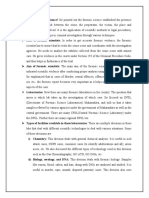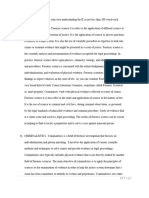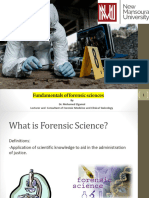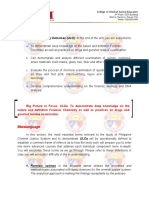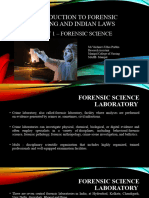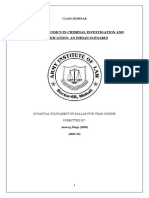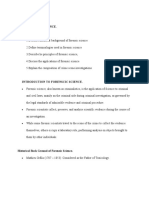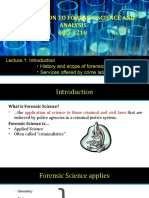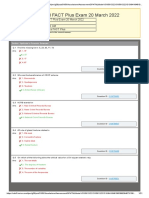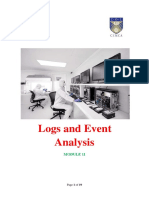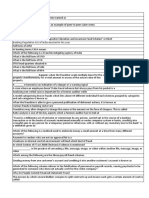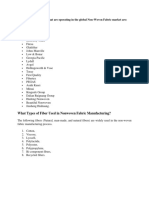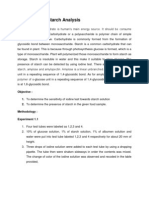0% found this document useful (0 votes)
122 views15 pagesMaulana Abul Kalam Azad University of Technology, West Bengal
The document discusses the branches, divisions, and institutions associated with forensic science. It outlines 31 branches of forensic science focusing on areas like serology, toxicology, odontology, and more. It also describes the divisions within forensic science laboratories, including biology, serology, chemistry, toxicology, and others. Finally, it discusses the central forensic science laboratories and forensic science laboratories that operate under the Ministry of Home Affairs and help investigate crimes.
Uploaded by
Rakesh PandeyCopyright
© © All Rights Reserved
We take content rights seriously. If you suspect this is your content, claim it here.
Available Formats
Download as DOCX, PDF, TXT or read online on Scribd
0% found this document useful (0 votes)
122 views15 pagesMaulana Abul Kalam Azad University of Technology, West Bengal
The document discusses the branches, divisions, and institutions associated with forensic science. It outlines 31 branches of forensic science focusing on areas like serology, toxicology, odontology, and more. It also describes the divisions within forensic science laboratories, including biology, serology, chemistry, toxicology, and others. Finally, it discusses the central forensic science laboratories and forensic science laboratories that operate under the Ministry of Home Affairs and help investigate crimes.
Uploaded by
Rakesh PandeyCopyright
© © All Rights Reserved
We take content rights seriously. If you suspect this is your content, claim it here.
Available Formats
Download as DOCX, PDF, TXT or read online on Scribd
/ 15








